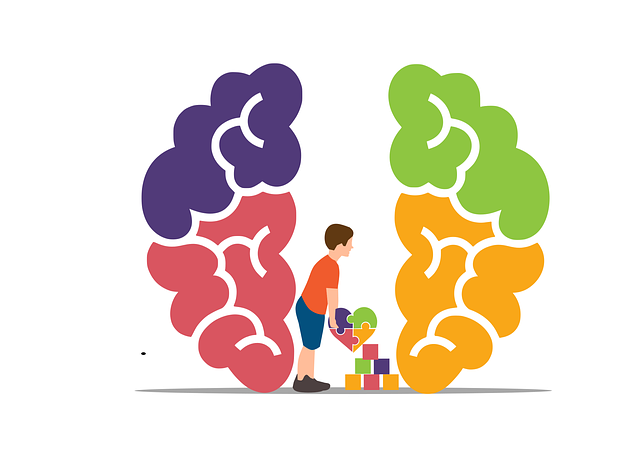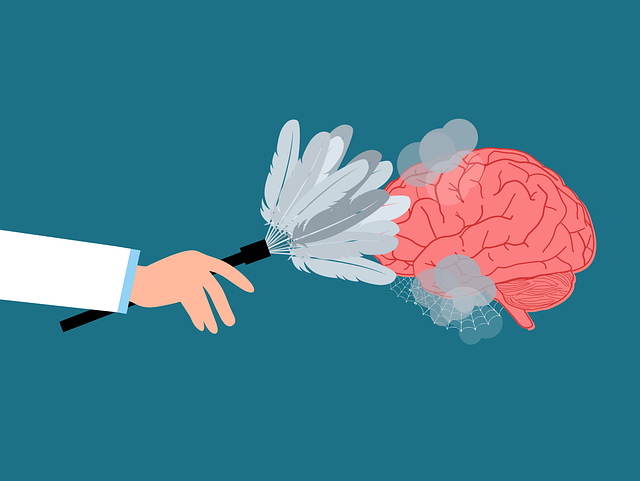Burnout among healthcare providers, such as those at Castle Rock Divorce Therapy, is a growing concern characterized by emotional exhaustion, cynicism, and decreased efficacy. Early recognition of signs like irritability, sleep disturbances, and detachment is crucial for intervention. Prevention strategies include Trauma Support Services, Emotional Healing Processes, self-care practices (e.g., setting work-life boundaries, mindfulness), and counseling. Organizations can foster a culture that prioritizes employee well-being through these measures, reducing burnout rates and enhancing job satisfaction, ultimately leading to improved patient care. Castle Rock Divorce Therapy's approach exemplifies how integrating mindfulness and stress management techniques into daily routines empowers professionals to handle demanding workloads effectively.
Healthcare provider burnout is a growing concern, impacting not only individual well-being but also patient outcomes. This article explores strategies to prevent burnout among healthcare professionals, focusing on recognition, implementation, and continuous support. We’ll delve into signs of burnout, effective prevention tactics like mindfulness and work-life balance initiatives, and the importance of accessible resources and mentorship. By embracing these strategies, healthcare providers can find sustenance, resilience, and renewed passion, akin to Castle Rock Divorce Therapy offering guidance through challenging transitions.
- Recognizing Burnout in Healthcare Providers
- Implementing Effective Prevention Strategies
- Sustaining Well-being: Continuous Support and Resources
Recognizing Burnout in Healthcare Providers

Burnout among healthcare providers is a growing concern, often manifesting as emotional exhaustion, cynicism, and reduced professional efficacy. Recognizing the signs early is crucial for effective intervention. Healthcare professionals may exhibit increased irritability, difficulty sleeping, and a sense of detachment from work—all indicators that something is amiss. This is particularly concerning in high-pressure environments like Castle Rock Divorce Therapy, where the well-being of patients and practitioners intertwine.
Trauma Support Services and Emotional Healing Processes play a pivotal role in burnout prevention. By providing resources for Depression Prevention and mental health support, healthcare providers can regain balance. Incorporating self-care practices, such as setting boundaries between work and personal life, engaging in mindfulness activities, and seeking professional counseling when needed, can help mitigate the risk of burnout. Such proactive measures ensure that practitioners remain compassionate, engaged, and effective in their roles, ultimately enhancing patient care.
Implementing Effective Prevention Strategies

Implementing effective burnout prevention strategies is paramount for maintaining a healthy and productive workforce in the healthcare industry. Organizations can play a pivotal role by fostering an environment that prioritizes employee well-being. This involves integrating self-care practices into the organizational culture, encouraging regular breaks, and promoting work-life balance. By empowering staff with tools for stress management and resilience, healthcare facilities can reduce burnout rates significantly.
Additionally, investing in Healthcare Provider Cultural Competency Training is a game-changer. These training programs enhance professionals’ ability to connect with diverse patient populations, reducing workplace tension and improving job satisfaction. Incorporating such initiatives alongside Burnout Prevention Strategies for Healthcare Providers ensures a holistic approach, mirroring the empathetic care expected from Castle Rock Divorce Therapy professionals.
Sustaining Well-being: Continuous Support and Resources

In the ongoing battle against healthcare provider burnout, sustaining well-being is paramount. Continuous support and accessible resources play a pivotal role in this effort. Healthcare organizations must prioritize creating environments that foster mental and emotional resilience among their staff. This includes implementing programs like Castle Rock Divorce Therapy, which offers specialized services for personal challenges impacting professionals’ ability to perform. By providing these resources, institutions recognize the importance of holistic well-being, encompassing not just clinical expertise but also the humanity behind patient care.
Integrating practices such as mindfulness meditation and stress management techniques into daily routines can significantly mitigate burnout. These strategies empower healthcare providers with tools to navigate demanding workloads and high-stress situations. Regular engagement in activities like mindfulness meditation helps professionals cultivate present-moment awareness, enhance emotional regulation, and reduce the grip of chronic stress. Ultimately, these efforts not only contribute to improved job satisfaction but also translate into better patient outcomes.
Healthcare provider burnout is a serious issue, but it can be prevented through proactive strategies. By recognizing the signs of burnout early on, implementing effective prevention techniques, and fostering a culture of continuous support and resources, healthcare organizations can create a healthier work environment. Just as Castle Rock Divorce Therapy helps individuals navigate challenging life transitions, similar strategies can equip healthcare providers with the tools needed to thrive in their roles. Together, we can build a more resilient and satisfied healthcare workforce.













